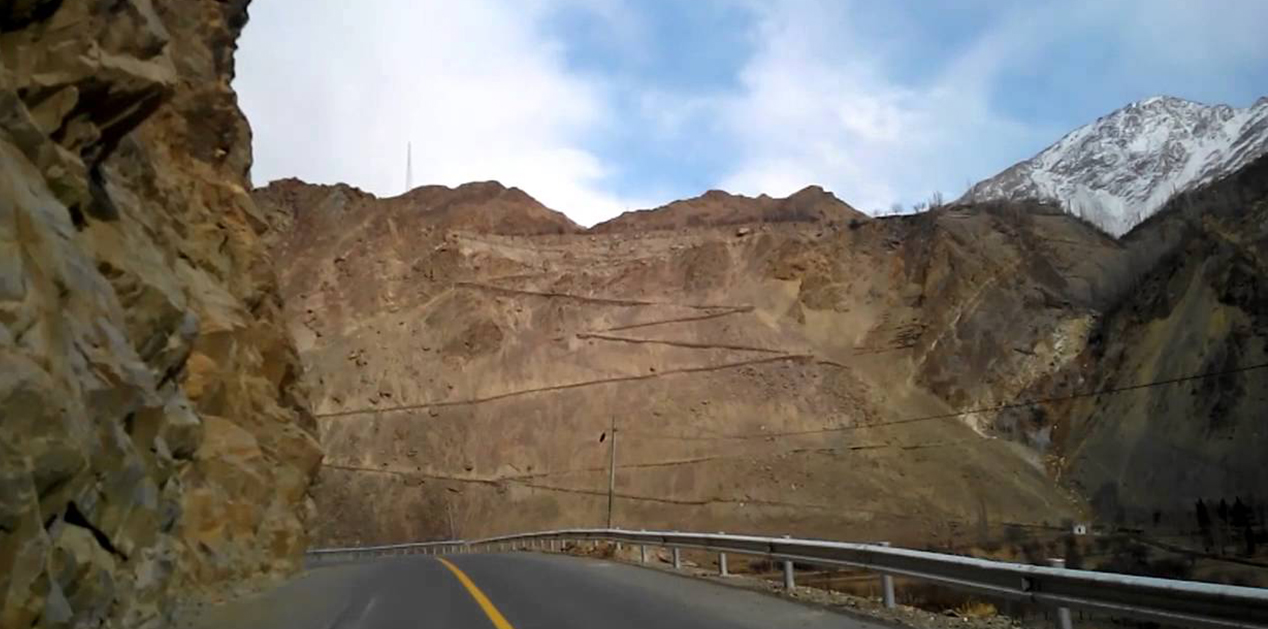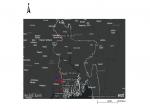The China-Pakistan Economic Corridor (CPEC), announced during Chinese President Xi Jinping’s well-publicised two-day (April 20-21, 2015) visit to Pakistan and with a value estimated by Pakistanis at US$ 46 billion, is a bold geo-economic initiative which alters the strategic environment in the region. It is the first step towards implementing the recommendation of Chinese strategists that “China should begin to shape, rather than just integrate into, the regional and international environment because China now has the capacity to do so”. It has begun to alter the status quo and potentially bend borders in the region.
The CPEC sets the stage for China to wield pre-eminent economic, military and diplomatic influence in Pakistan. The agreement for Chinese companies to construct 51 Chinese-aided infrastructure, energy and military projects shows that Beijing’s engagement with Pakistan is for the foreseeable long-term. It seeks to bind Pakistan to China as power generation, transport, commerce, R&D and the defence of Pakistan will all be increasingly tied to Chinese investment and interests. Almost six months before Xi Jinping’s visit to Islamabad an influential senior Chinese academic, specialising in researching Afghanistan-Pakistan and who is occasionally called to brief the Chinese Communist Party (CCP) Central Committee (CC)’s Politburo, said in private conversation that “while we had earlier purchased the loyalty of the Pakistanis, now we will buy Pakistan!”
With his decision to visit Pakistan, Xi Jinping became only the second Chinese leader to travel to Pakistan after Hu Jintao (November 23-26, 2006) nine years earlier. Unmistakably deliberate in its timing just three weeks prior to Indian Prime Minister Modi’s arrival in China, the visit was important and marked the initiation of a bold new policy. It signalled that in the pursuit of national interest Beijing no longer feels the need to retain even the diplomatic façade of showing sensitivity to India’s concerns and that, in the backdrop of warming Indo-US relations, will use Pakistan to exert greater pressure on India. Equally clear is that China’s leadership has determined that elevating its comprehensive relationship with Pakistan would best serve its strategic interests and that this objective will overshadow any other foreign policy considerations including that of ensuring a friendly, peaceful neighbourhood.
By announcing the construction of several major civil and military infrastructure projects as part of the CPEC in Pakistan occupied Kashmir (PoK) and the areas of Gilgit and Baltistan, China has accorded de facto ‘legitimacy’ to Pakistan’s illegal occupation of Kashmir, Gilgit and Baltistan as well as Pakistan’s illegal cessation in 1963 of the Shaksgam Valley in Pakistan occupied Kashmir (PoK) to China. Beijing has thus dispelled decades of ambiguity to side with Pakistan on the Kashmir issue ignoring India’s concerns regarding its sovereignty and territorial integrity. Within weeks of Xi Jinping’s visit, senior Chinese leaders and officials were describing Pakistan as China’s “ally” and “only friend”. This enhanced relationship was publicised when Prof Yan Xuetong, Director of the Institute for International Relations at Beijing’s Tsinghua University and an influential Chinese strategic analyst close to Xi Jinping, told the New York Times on February 9, 2016 that “China has only one real ally, Pakistan.” The CPEC has far reaching implications.
Reflective of China’s attitude was Chinese Assistant Foreign Minister Liu Jianchao’s condescending remark in mid-April 2015, that "the project between China and Pakistan does not concern the relevant dispute between India and Pakistan. I do not think the Indian side should be over-concerned about that". The comment is at obvious odds with Beijing’s prickly reaction to India’s offshore exploration efforts in Vietnamese waters and stand on the South China Sea dispute. Equally insensitive were suggestions by senior Chinese Communist Party (CCP) officials and influential Chinese academics, just weeks after Prime Minister Modi’s visit to Beijing, that India could join the CPEC and benefit!
Over the years China has built a solid constituency in Pakistan’s Army, bureaucracy and diplomatic corps, all of which are strong supporters of close strategic ties with China. They have backed the development and management of Gwadar Port by China and the CPEC. Since 2010, more officers of the Pakistan armed forces undergo training in China than the US. In April 2015, just weeks before Xi Jinping’s arrival in Pakistan, former Pakistan Ambassador Riaz Khokar hinted at the need for elevating the existing intelligence cooperation and wrote in China’s state-run Global Times that the two countries must identify hostile elements operating in Balochistan. Later, in an article in Dawn on April 17, 2016, prior to the meeting between the Foreign Secretaries of India and Pakistan, former Pakistan Ambassador Munir Akram said, “So long as India persists in its reported support for the Tehreek-i-Taliban Pakistan, and the Balochi Liberation Army, Pakistan would be unwise to give up the option of supporting the legitimate struggle of the Kashmiri people for freedom and self-determination.” Calling for “much closer ties with China”, he described strategic cooperation with China as critical. Despite the opposition and reservations expressed by some Pakistani provincial politicians, the Pakistan Army under General Chief Raheel Sharif has staunchly backed the CPEC.
Opposition to the CPEC centres primarily on the terms for loans with quite a few prominent Pakistani journalists and academics pointing out that the interest rates are high and the projects, especially the energy projects, are commercially unviable. Pakistan’s provincial and local politicians are objecting to the paths designated for the transportation corridors and the location of projects, with Punjab and Sindh accused of having cornered the majority. There is also widespread dissatisfaction at the employment only of Chinese workers and the project construction sites being isolated inside 10-foot high walled perimeters ostensibly for security. Locals in Balochistan and the Northern Areas also reportedly resent the exploitation of their natural resources and not being employed on these projects. This has prompted the critics to question the supposed benefits accruing to Pakistan and Pakistanis and the burden of debt that the CPEC will place on Pakistan. Security is a serious concern after the attacks on Chinese workers in Balochistan and now visiting Chinese officials and workers move around Gwadar only with heavy security provided by the army and police. The attacks have the potential to spread, though, as indicated by the bombing in Karachi on May 2016, when a Chinese engineer and his driver were injured. Responsibility for the bombing was claimed by Sindhudesh Revolutionary Army, a little-known separatist group advocating the independence of Sindh.
To assuage the concern of Chinese companies and their employees working on Chinese- aided projects in Balochistan and other areas, the Pakistan army has raised a 10,000- strong division comprising elements of the Frontier Corps, police and Levies under Major General Abdul Rafique. In November 2015, Q.U. Jainging, Deputy Director General of China's Ministry of Public Security (MPS), along with “senior officials” of China's Ministry of Foreign Affairs Ms Lili and Zhang Maoming, visited Gwadar to assess the security environment and met Major General Azhar Naveed, Home Secretary of Balochistan and senior Pakistan army and civil officers. Since then there have been a number of senior-level Chinese security and military delegations to Pakistan including to CPEC project sites. The delegations have met local politicians, government officials and interacted closely with Pakistan army and ISI officers in Islamabad, Rawalpindi, Gwadar and Quetta. Pakistan-based Chinese diplomats have also been attending coordination meetings. At least two conferences were held in Gwadar and Quetta in April this year. A two-day (April 11-13, 2016) ‘national conference’ held in Gwadar, for example, was attended by politicians, influential citizens and over 30 Pakistan Army and ISI officials and Chinese diplomats from Islamabad.
While China has appreciated the Pakistan Army’s new security force, there is credible information that in early January 2016, Beijing informed Islamabad that it is “raising” a division-strength “private army” in China for deployment to protect the CPEC, including in the PoK, Gilgit and Baltistan areas. The Chinese security personnel are to be deployed in addition to the force provided by Pakistan. China already has in place the necessary legal framework permitting deployment of its troops and security personnel abroad for protecting China’s national interests.
Other steps are being taken to safeguard China’s investments. A report in Dawn of January 7, 2016, disclosed that Pakistan plans to upgrade the constitutional status of the disputed Gilgit-Baltistan region as a corollary to the CPEC. A senior ‘government’ official from Gilgit-Baltistan described this as intended to give “legal” cover to proposed Chinese investments since "China cannot afford to invest billions of dollars on a road that passes through a disputed territory claimed both by India and Pakistan." China had indicated its position on Gilgit-Baltistan as early as in the 1980s when its official media referred to this as Pakistani territory.
The move also has other major implications. It will integrate this portion of Kashmir with Pakistan by giving it considerably enhanced legislative powers, control of its revenue and allowing it to be represented in Pakistan’s federal parliament by two members for the first time -- albeit as observers. Pakistani strategic analyst Ayesha Siddiqa interpreted the move as possibly demonstrating “Islamabad's desire to end the Kashmir conflict by formally absorbing the territory it controls -- and, by extension, recognising New Delhi's claims to parts of the region it controls, such as the Kashmir Valley”. She said: "If we begin to absorb it so can India. It legitimises their absorption of the valley."
This could, however, well be the thin end of the wedge as Pakistan appears to have got emboldened following the upgrading of its relationship with China. Examples are its renewed efforts to raise the Kashmir issue internationally, the uptick of restiveness and violence in Kashmir over the past year, and higher likelihood of further terrorist attacks elsewhere in India. Beijing had, incidentally, earlier hinted at its ability to meddle in India’s internal affairs and specifically in J&K, when in 2010 a so-called Chinese NGO invited Hurriyat ‘leader’ Mirwaiz Umar Farooq to China. Mirwaiz Umar Farooq had then stated that China has a role in settlement of the Kashmir issue. More recently on March 14, 2016, the Deccan Chronicle quoted the hard-line Pakistan-backed Syed Ali Shah Geelani of the Hurriyat Conference as describing “China as a reliable friend of the people of Kashmir” and saying “it is extremely thankful to Beijing” for its “unconditional support” and for not recognizing the Himalayan State’s “illegal and forced occupation by India”.
China has on separate occasions also laid claim to Kashmir. An official Chinese map published in 1954 -- still used in Chinese school text books -- depicts territories taken by ‘imperialist’ powers and which China has said it would “recover”. Ladakh is part of these territories along with Arunachal Pradesh and the Andaman Islands. On March 1, 1992, ‘Shijie Zhishi’ (World Affairs) published a map showing India without the state of J&K and depicting Kashmir as part of China. There have been other such claims. From August 2010, China designated the entire state of Jammu and Kashmir as ‘disputed’ and began to issue ‘stapled visas’ to residents of the state. Chinese Foreign Minister Wang Yi at his press conference in New Delhi in August 2014, reiterated Beijing’s stand in a carefully worded statement asserting that the issue of stapled visas by China were a “unilateral” “flexible” “goodwill gesture” or, in other words, that the status of Arunachal Pradesh and Jammu and Kashmir remain disputed.
Pertinent is that soon after China’s intrusion in the Depsang Plains in Ladakh immediately prior to Chinese Premier Li Keqiang’s first visit to India as Premier in April 2013, Beijing reiterated its claim over Ladakh. On May 14, 2013, Zhongguo Qingnian Bao (China Youth News), the influential high-circulation official mouthpiece of the Communist Youth League (CYL), published a lengthy article claiming that the Ladakh region “has been part of Tibet since ancient times …” and that “Ladakh was under the jurisdiction of the central government of China's Qing Dynasty until 1830s.” It added “Although it is under Kashmir, Ladakh shares similarities with Tibet in terms of culture, religion, customs, and language, and it has long been dubbed "Little Tibet."
The CPEC has a definite military component. A secure fibre-optic link connecting Kashgar in the Xinjiang-Uyghur Autonomous Region with the Pakistan Army GHQ in Rawalpindi is being laid at a cost of US$ 44 million, highlighting the close military coordination between Pakistan and China. It goes via Khunjerab, Karimabad, Gilgit, Babusar Top, Naran, Mansehra and Jharikas. Kashgar is the headquarters of the South Xinjiang Military District of the erstwhile Lanzhou Military Region, now called the Xinjiang Military Command. The latter is merged in the People’s Liberation Army (PLA)’s Western Theatre Command or West Zone. The responsibilities of the PLA’s West Zone, established in January 2016, include safeguarding the borders with Afghanistan, Pakistan, protecting Chinese investments and projects in the CPEC, protecting China’s land frontiers with India and focussing on “threats in Xinjiang and Tibet as well as Afghanistan and other states that host training bases for separatists and extremists”. Instructions received in January 2015 by the erstwhile Lanzhou Military Region confirmed that the West Zone’s commitment in Afghanistan, Pakistan and the CPEC are long-term. The instructions directed that selected operational and border defence officers be trained in “informationisation” and “joint operations command”, that border defence colleges train officers in “border discussions” and the usage of mortars, and, specifically, that its “backbone personnel” be trained in the Pushto and Urdu languages.
The West Zone’s operational jurisdiction is anticipated, in course of time, to expand to include Gwadar port and China’s considerable economic interests and investments in eastern Africa where it has very recently signed an agreement for a base at Djibouti. China’s interest in Gwadar, where it has “sovereign guarantees to the port facilities” and where reports claim it has set up electronic eavesdropping posts to monitor shipping traffic through the Straits of Hormuz and the Arabian Sea, has been evident since 2002. A total of nine projects valued at approx. US$ 1 billion (or 2% of US$ 46 billion), each intended to augment China’s commercial and military capacity, are now planned in and around Gwadar as part of the CPEC. These are a new international airport (US$ 230 million); a Gwadar Easterly Expressway (US$ 141 million); construction of breakwaters (US$ 123 million); dredging of berthing areas and channels (US$ 27 million); infrastructure for Free Zone and EPZs and port-related industries (US$ 32 million); fresh water treatment and supply plant (US$ 130 million); hospital at Gwadar (US$ 100 million); and a technical and vocational institute (US$ 10 million). China’s continuing interest in Gwadar was underscored in April 2016 when, to calm differences over implementation of CPEC projects, it decided to give the estimated US$ 230 million required to construct the new international airport at Gwadar as a grant. Beijing is yet to decide whether interest will be charged on the loans to be given for the other projects in and around Gwadar or whether these will also be grants.
Tensions between China and Pakistan centering on the CPEC were especially high from early this year till at least end April, with Pakistan complaining that it had done all that was asked but China appeared to be dragging its feet. Acknowledging that the CPEC is a “multi-billion dollar mega project based on the principle of mutual consultation”, Pakistani officials complained about undesirable delays caused by differences regarding ease of engineering, economic benefits and calculations of costs of particular projects. Concern was voiced that the situation with the CPEC had almost reached the stage where “mutual consultation turns into mutual accusation”. At the end of April 2016, China informed Pakistani officials that it would adopt more flexible financial arrangements favouring Pakistan. Beijing said it would urge Chinese companies to put money into social welfare projects and invest in “needy short term projects” on the basis of a grant or zero interest loan. Among the social welfare projects identified are a water treatment plant in Gwadar and a hospital at Gwadar. This is in addition to the US$ 230 million, estimated as the cost of construction of the new international airport at Gwadar, that China is giving as a grant.
China has earmarked the financial institutions established by it, like the Asian Infrastructure Investment Bank (AIIB), BRICS’ New Development Bank, Silk Road Fund and possibly a SCO Development Bank, for aiding the ‘One Belt, One Road’ (OBOR) of which the CPEC is a part. The AIIB is to serve as the financing arm of OBOR. China’s decision to use these banks, especially the AIIB and BRICS New Development Bank, to extend fiscal assistance to Pakistan for projects in the CPEC in furtherance of its strategic objectives immediately puts India to the test. On May 9, 2016, the official English-language China Daily reported the AIIB’s announcement that it would co-finance a US$ 300 million motorway project in Pakistan with the Asian Development Bank (ADB). Asserting that “Pakistan is a strong ally of China”, the report indicated there would be more such projects. The case is identical with that when China used its economic clout with the ADB to block developmental assistance for poverty alleviation projects in India’s north-eastern state of Arunachal Pradesh on the ground that it was ‘disputed’. The CPEC too goes through India-claimed and disputed territory.
The upgraded relationship with China following the agreement on the CPEC is already yielding Pakistan dividends, despite the reservations harboured by Chinese strategists about Pakistan’s stability or differences inside Pakistan between provincial politicians and the military over the CPEC. Beijing’s commitment to the upgraded relationship with Pakistan was evident during Prime Minister Modi’s visit to Beijing in May 2015. When Modi raised the border issue with Chinese President Xi Jinping at X’ian, the latter side-stepped any substantive response. Instead, Modi was informed of China’s stance on Pakistan and the Chinese raised the issue of the Dalai Lama. A few weeks following Prime Minister Modi’s visit an Indian delegation met high-level central Chinese Communist Party (CCP) and military officials in Beijing. The Chinese delegation, led by the Executive
Vice President of the Central Party School He Yiting, similarly avoided any discussion on the border issue or border intrusions. Towards the end of the deliberations, however, a retired but influential General still affiliated with a PLA think-tank, underscored China’s close ties with Pakistan. He unequivocally stated that India ‘must ease tensions with Pakistan, that it must resolve the Kashmir dispute’ and that India’s relations with China would improve thereafter. His remarks were not contradicted. The upgraded relationship appears to have emboldened Pakistan. Pakistan Army Chief General Raheel Sharif’s warning early this year that “Kashmir is an unfinished agenda of partition. Pakistan and Kashmir are inseparable”, is a pointer. Beijing is unlikely to waver in its commitment to Pakistan in the near to mid-term.
There have been additional substantive benefits for Pakistan. During the proposed meeting between Chinese President Xi Jinping and Pakistan Prime Minister Nawaz Sharif on the sidelines of the Nuclear Summit (March 31-April 1, 2016) – which Nawaz Sharif finally did not attend -- the two were to discuss China “extending diplomatic or other substantive support” to Pakistan to counter US insistence that Pakistan go slow on the development of its tactical nuclear weapons. Bilateral Intelligence cooperation has also increased and now encompasses sharing of operational information on Afghanistan, developments relating to the Taliban and its leaders, and the tracking of operational activities of Afghanistan’s NSD and India’s R&AW. Yet another demonstration of Beijing’s support to Pakistan is China’s stance at the UN Sanctions Committee where it has placed holds on India’s request to list Syed Salahuddin of the United Jihad Council; to investigate the source of Lashkar-e-Tayyaba (LeT) chief Hafiz Saeed’s funds despite financial sanctions; to ask Pakistan how LeT commander Zaki-ur Rahman Lakhvi posted bail and Pakistan let its courts set him free; and, most recently, the blocking of India’s request in the case of Jaish-e-Mohammed (JeM) chief Masood Azhar. This has emboldened terrorist leaders in Pakistan. Pakistan and China continue to work in collusion to ensure that India does not enter an expanded UN Security Council as a Permanent Member with full veto rights. A vivid example of such cooperation was their coordinated activity recently during the process of India’s admission to the Nuclear Suppliers Group (NSG). This cooperation will extend to the Shanghai Cooperation Organisation (SCO).
Problems and differences between China and Pakistan are likely to surface in the next few years. Beijing, though, will be reluctant to forego its strategic investments in Pakistan and will try to maintain the relationship but while holding back on further financial investments. Beijing’s current track record of fulfilling committed investments is barely 6-12% and this is unlikely to change leading to frustration in Pakistan. The CPEC will directly contribute to this dissatisfaction as, once the thermal power projects in PoK, Gilgit, Baltistan and Balochistan are completed, the tariff per unit of electricity will be excessive as coal will be imported from Xinjiang. Further, as Pakistan begins to repay the loans, Islamabad will realize that the interest rates are too high and impose strains on Pakistan’s finances. Renegotiating them will be almost impossible as Sri Lankan President Maithripala Sirisena discovered during his visit in March 2016, to Beijing when the Chinese declined to renegotiate terms on the plea that they are part of the ‘One Belt, One Road’ which is Xi Jinping’s personal initiative and any amendment would be a “loss of face”! Finally, the CPEC will facilitate the passage of radical Islamist elements, including that of returning battle-hardened Uyghurs, into China’s sensitive and restive Xinjiang-Uyghur Autonomous Region. Underscoring the steadily increasing radicalisation of Pakistan, the Chief of the Jamaat-ud-Dawa (JuD) and Lashkar-e-Tayyaba (LeT), Hafiz Saeed told the Nawaz Sharif government in late May 2016, to “show some courage and direct China to stay away from hurting Islamic sentiments”. A high-powered delegation of Pakistan’s Ministry of Religious Affairs subsequently left for China on June 28, 2016 to check the veracity of reports that Chinese authorities have banned fasting in the holy month of Ramazan in the Xinjiang-Uyghur Autonomous Region. Hafiz Saeed is the first Pakistani national to express concern about the plight of Muslims in China. The ISIS has separately earlier targeted the Xinjiang-Uyghur Autonomous Region. These are signs that clearly portend trouble.
Meanwhile, in the near to medium term India can expect to come under increased pressure. China will fully back Pakistan’s efforts to secure predominant influence over any post-US Afghanistan regime, acquire so-called ‘strategic depth’, and exclude or marginalise India in Afghanistan. US, Chinese and Pakistani interests converge on Afghanistan, as evidenced by only the US, China, Pakistan and Afghanistan deciding to hold direct peace talks with the insurgent groups in Pakistan. Some academics and officials in the US are additionally recommending that the US should participate in the CPEC. Beijing’s interest will be in getting India to acquiesce to Pakistan’s occupation of Kashmir, Gilgit and Baltistan. It could exploit its contact with the Hurriyat for a role in the Kashmir issue. China and Pakistan will both keep India under military and diplomatic pressure.
(The author is a former Additional Secretary in the Cabinet Secretariat, Government of India and is President of the Centre for China Analysis and Strategy.)
Published Date: 19th July 2016, Image Source: https://en.wikipedia.org
(Disclaimer: The views and opinions expressed in this article are those of the author and do not necessarily reflect the official policy or position of the Vivekananda International Foundation)











Post new comment